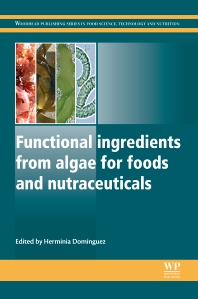Books in Agricultural and biological sciences
Books in Agricultural and biological sciences
The Agricultural and Biological Sciences collection advances science-based knowledge for the improvement of animal and plant life and for secure food systems that produce nutritious, novel, sustainable foods with minimal environmental impact. Food Science titles include not only those products from agriculture but all other aspects from food production to nutrition, health and safety, chemistry to security, policy, law and regulation. Biological Sciences address animal behaviour and biodiversity, organismal and evolutionary biology, entomology, marine biology and aquaculture, plant science and forestry.
- 2nd Edition
- October 3, 2013
- Jung H. Han
- English
- Hardback9 7 8 0 1 2 3 9 4 6 0 1 0
- eBook9 7 8 0 1 2 3 9 4 8 3 5 9

Innovations in Food Packaging
- 1st Edition
- October 2, 2013
- D.J.A. Cole + 1 more
- English
- Hardback9 7 8 0 4 0 8 1 0 7 6 8 6
- Paperback9 7 8 1 4 8 3 2 4 9 0 5 6
- eBook9 7 8 1 4 8 3 2 7 8 3 2 2

Control of Pig Reproduction
- 1st Edition
- October 2, 2013
- R.E. Spier + 1 more
- English
- eBook9 7 8 1 4 8 3 1 4 5 0 9 9

Modern Approaches to Animal Cell Technology
- 1st Edition
- September 30, 2013
- John E Blundell + 1 more
- English
- Paperback9 7 8 0 0 8 1 0 1 4 1 1 0
- Hardback9 7 8 0 8 5 7 0 9 5 4 3 5
- eBook9 7 8 0 8 5 7 0 9 8 7 1 9

Satiation, Satiety and the Control of Food Intake
- 1st Edition
- September 30, 2013
- Herminia Dominguez
- English
- Hardback9 7 8 0 8 5 7 0 9 5 1 2 1
- Paperback9 7 8 0 0 8 1 0 1 4 1 3 4
- eBook9 7 8 0 8 5 7 0 9 8 6 8 9

Functional Ingredients from Algae for Foods and Nutraceuticals
- 1st Edition
- September 30, 2013
- Philip C Calder + 1 more
- English
- Paperback9 7 8 0 0 8 1 0 1 3 8 0 9
- Hardback9 7 8 0 8 5 7 0 9 0 3 7 9
- eBook9 7 8 0 8 5 7 0 9 5 7 4 9

Diet, Immunity and Inflammation
- 1st Edition
- September 30, 2013
- David Kilcast
- English
- Hardback9 7 8 0 8 5 7 0 9 4 3 9 1
- eBook9 7 8 0 8 5 7 0 9 8 8 5 6

Instrumental Assessment of Food Sensory Quality
- 1st Edition
- September 25, 2013
- Regina H. Macedo + 1 more
- English
- Hardback9 7 8 0 1 2 4 1 6 0 2 8 6
- eBook9 7 8 0 1 2 3 9 1 4 5 6 9

Sexual Selection
- 1st Edition
- September 25, 2013
- Nikolai N. Smirnov
- English
- Hardback9 7 8 0 1 2 3 9 6 9 5 3 8
- eBook9 7 8 0 1 2 3 9 7 2 3 4 7

Physiology of the Cladocera
- 1st Edition
- September 24, 2013
- F. Cooke + 1 more
- English
- Paperback9 7 8 0 1 2 1 8 7 5 7 1 8
- eBook9 7 8 1 4 8 3 2 7 5 6 8 0

Avian Genetics